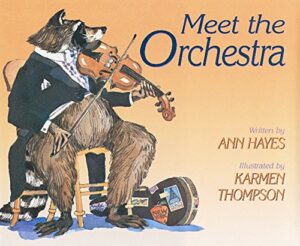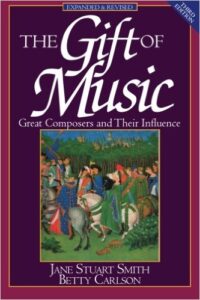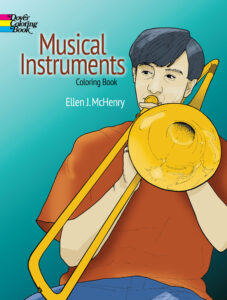Summer Music – Tips & Resources

As a music teacher, I always approach the summer months with a sense of apprehension. The majority of families take a well-deserved break through July and August, and I wave goodbye to my students at the end of June wondering how much knowledge they’ll return with in September. “Use it or lose it,” is an interesting truism, and I have seen the results of this in many kick-off lessons.
If you want your kids to use the skills they’ve carefully and patiently built up over the last ten months over their summer break, or if you want to bolster your fine arts repertoire, or if you simply want to expose a curious child to music education to see if they might be interested in music lessons come the new school year, then this blog post is for you!
Five easy tips to keep the love of creating music alive in your kids during their summer break.
Listen

Listening to Classical music is an easily missed component of learning music. Students can get so caught up in perfecting their pieces that they forget the bigger picture of what they are a part of. Go through their music books and find the composers that they’re playing (names are usually in the top right corner on the page), then take to Youtube and Spotify and find out what else they’ve written. Bonus points if you can find videos of professional performers and symphony orchestras to expose your kids to good posture, performance practice, and stage presence.
Books like Meet the Orchestra (for smaller children) and The Story of the Orchestra (for somewhat bigger children) also do a fabulous job of introducing kids to the different instruments used in Western Art Music and can be especially beneficial if your child only has experience with one instrument. The Gift of Music is another fabulous tool if you want to study a particular composer in depth.
Research

Using books like The Story of the Orchestra (for middle children) and The Gift of Music (for older children), take the composers you’ve found and listen to their pieces with some background knowledge of the composer. Did you know that Beethoven was already going deaf as he wrote his infamous Fifth symphony? Did you know that Schumann was likely schizophrenic? Did you know that Bach had twenty children? Did you know that much of Mendelssohn’s music was likely written by his sister, Fanny? This sort of background knowledge can inform how you and your children listen to and appreciate the music, and will also benefit them as they go on to play music by these composers.
Colour
Colouring is a remarkably efficient and flexible way to engage children of all ages in music appreciation. Using colouring books like the Musical Instruments colouring book, the Great Composers colouring book, and the Music Activity Book gives your children a double whammy experience, combining both creative work and studious work. Simply giving them a piece of blank paper and telling them to draw a story that they think the music sounds like is another simple and quick way to get them to listen and use their imagination. Program music (instrumental music that was written to purposefully depict a story) is a great place to start. Saint-Saens’ Carnival of the Animals, Tchaikovsky’s Peter and the Wolf, Grieg’s In the Hall of the Mountain King, and Vivaldi’s Four Seasons are great pieces that come with stories already. If you think your child is ready for something more abstract, go for pieces like Beethoven’s 5th symphony, Handel’s Water Music Suite, or Schoenberg’s Piano Suite.

Expand
Take the opportunity in the summer to expand your child’s (and your own!) taste in music beyond whatever is on the radio or on your playlists already. Listen to Harry Connick Jr. if your child has never been exposed to jazz. Find a family-friendly musical like Newsies and memorize all the lyrics. Discover different styles of folk and fiddle music like Bluegrass, Irish, Old-Time, and Metis. Or go farther abroad and listen to music from Europe, the Middle East, Asia, and Australia. You’ll find instruments not found in the resources above, and your kids will develop an ear for a wide variety of styles!
Create
While serious composition can scare off the perfectionists in your children, getting comfortable exploring their instrument outside of structured music is a great exercise that will only serve them in their study of music. Learning simple songs by ear (trying to play a song without looking at a score, just going by how it sounds) is a good place to start. Imitating nature is a good next step – can they make their instrument sound like rain? Like a thunderstorm? Like birds singing? Like a kangaroo jumping around? Like leaves swirling? What about events like a race, or a ballet, or going to church? Exploration like this strengthens familiarity with the instrument and pushes children to take ownership of their tone.
I hope that after reading through these tips your creative juices are flowing! The ability to appreciate music of all types and forms is an invaluable gift you can give your children, and I encourage the parents reading to nurture this God-given gift in your home. The study of music brings beauty, perseverance, expression, and satisfaction to everyone who digs a little deeper into the history and technique of how music is built. All the best in your summer studies!
Abigail is a Royal Conservatory of Music graduate; she completed her ARCT in Piano Pedagogy in 2020 and she teaches piano and violin. Abigail is the oldest of 7 and was homeschooled from start to finish. She likes to listen to Bach, Beethoven, and jazz. Other interests include reading, watercolours, and crochet.
